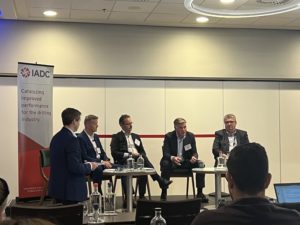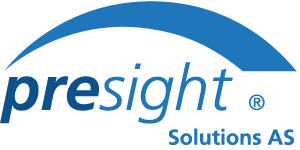IADC HSE and Sustainability Conference in Europe 2023 On September 25th;
Industry leaders met at the IADC (International Association for Drilling Contractors) HSE and Sustainability Conference in Amsterdam to discuss Major Accidents and its frameworks.
Facilitated by Andy Lambert (Head of Safety, Security, and Sustainability for Global Drilling at Equinor), the panel with Roar Sognnes (Principal Engineer at PSA (Petroleum Safety Authority)), Per Henry Gonsholt (Vice President for Safety at Equinor), Steinar Holst (VP Technical Services at Odfjell Drilling) and our Morten Andreassen (Senior Risk Management Advisor) convened on the complexities of Major Accidents and barrier management to control the risks.
The discussions were centered on the PSA Management Regulations section 5, (which stipulates the necessity of a combination of technical, operational, and organisational barrier elements to realise the barrier functions). This is for risk owners to comprehend the health and status of each barrier element to keep the operations safe.
The discussion focused on how the combination of extensive data with quantitative and qualitative evaluations across company interfaces can empower risk owners to gain a holistic view and status of the major accident risks. Also, the challenges associated with managing major accident hazards.
The conversations highlighted the critical importance of thorough safety protocols, strong leadership, an appreciation for human factors’ contribution, and a commitment to continuous improvement.
They emphasised the need for a comprehensive system to assess that complements traditional measures aimed at preventing major accidents. Traditional measurements encompass aspects such as leadership and culture, capacity, and competence within safety management perspective.
The panel emphasised the need for a dashboard, akin to the dashboard in a car, to help leaders focus on the right aspect of safety.
Read more about Presight® Barrier Monitor™ here.
Additionally, the panel stressed the significance of top management setting the example. The need for them to understand the organisation’s historical aligning their actions with the overarching goal of accident prevention.
Furthermore, it was reinforced that human errors, while normally not the sole cause of accidents, can indeed contribute to them. The panel brought attention to the need to equip workers with systems that facilitate safe job execution and systematically address failures. Equally, the panel discussed various strategies, including action plans designed to enhance safety measures, streamline information flow, and define the core competencies requisite for workers.
Lastly, the panel also called attention to the importance of audits and the value of gathering lessons from past incidents. It was noted that incidents tend to fade from memory over time, making it imperative to preserve historical knowledge and ensure that new employees are explained past incidents.
Effectively managing major accident hazards necessitates an intricate understanding of technical, operational, and organisational barriers.
The panel acknowledged that determining competence in these multifaceted areas are complex and challenging and the need for robust and good systems are paramount.
Presight’s comprehensive safety culture model and measurement approaches offer a pathway to continuous improvement, enhanced employee engagement, and mitigating potential risks. Read more about it here.
Here is also the IADC’s own recap of the conference: https://iadc.org/drillbits/recap-hse-sustainability-europe-conference/


